What is arguably the toughest place to be on the court in pickleball? The area where most would recommend that you do not stand because it’s a losing proposition?
I’d argue it’s the transition zone and I think many would agree.
And what is arguably the toughest shot to hit in pickleball? The shot that takes the most skill that only the most advanced of players really seem to have mastered?
I’d argue it’s the reset shot and I think many would agree with that also.
So, it would stand to reason then that hitting a reset shot from the transition zone is arguably one of the toughest things to do on the pickleball court. I think few would argue with that.
Should you stand in the transition zone and play the entire game from there thinking that’s going to work well? Absolutely not. However, some bangers may tell you otherwise.
In case you don’t know, bangers are those players that do typically stand somewhere in the transition zone and basically just bang away. They keep hitting repetitive driving ground strokes, as hard as they can, to the other side.
This can work up to a point if your team has at least a bit more control when doing this than the other team if they’re doing the same thing.
But once you face a more skilled team that can hit drops, dinks and resets just like the shot we’re talking about in today, then bangers are going to be on the losing end of most points.
If you struggle with bangers then working your reset is just what the doctor ordered for you to be able to take them down. So, this blog is perfect for you. You’re going to need to start viewing the transition zone as the area that you pass through on your way to the net.
The transition zone is an area that you’re going to have to contend with on virtually every point. Because, unless you’re the returner’s partner on a particular point, you’re starting the point from back at the baseline.
Therefore, you will have to navigate the transition zone in order to get to the most desirable area of the court which is up at the net. And, if you don’t know that you should be trying to get to the net on every point than now you do.
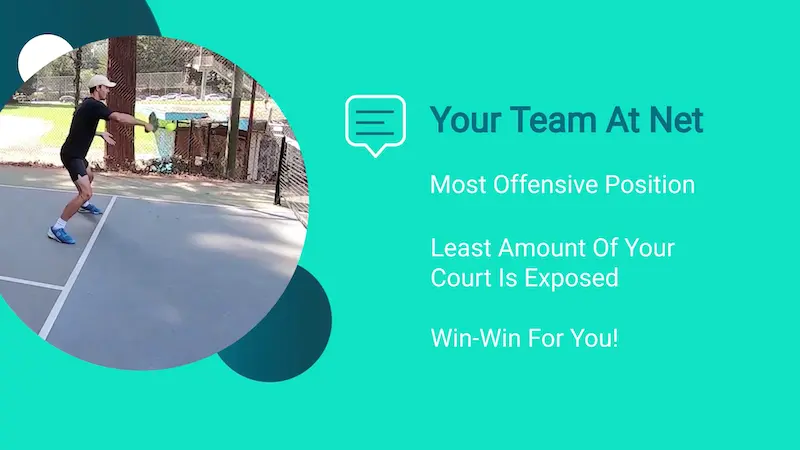
You can do the most amount of damage to your opponents from up there and the smallest amount of your own side of the court is exposed. It’s a win-win for you.
So, although you don’t want to be there that long you must learn to successfully navigate the transition zone.
Shots from there are so tough because you have to decide whether or not to volley it or half volley it. Decide how much to push it or not to push it at all, and just hold your paddle there and more or less block it. It may come right at your feet or you may have to move and stretch somewhat.
You’re pretty much hitting it from a tough body position a lot of the time. You’re receiving a medium or fast paced shot and taking all the pace off of it and attempting to drop it on a dime in the kitchen.
Navigating this area of the court is tough because of the skills required to do it successfully.
For all these reasons and more the transition zone is possibly the most difficult place from which to play on the pickleball court.
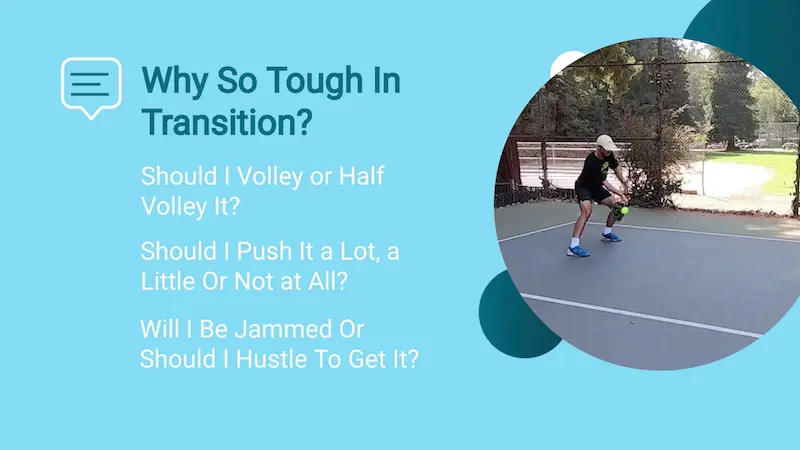
Yet, as just mentioned, in order to get up to the net, you must successfully make it through the tricky transition zone because you can’t start from up at the non-volley zone line unless you’re the returner’s partner.
You will find yourself in this area often when playing competitive games, despite not really wanting to be there. Therefore, it’s important to practice playing from this spot a lot.
In fact, even though it’s the area you want to spend the least amount of time in when playing, it’s the area you want to spend the most amount of time in when training because it’s the most difficult. It’s a huge difference maker in terms of level of play when you have this area more or less locked in to your game.
Getting better here will have the ripple effect of improving your entire defensive game.
You’ll likely be better at blocking at the net and defending from the baseline since you rely on a lot of the same skills to execute those shots as you do the transition zone reset.
The goal should be to get very comfortable with it because you will be there for a good chunk of your game time regardless of whether you want to be or not. When you get comfortable there a whole other level of play will open up to you and you will become a total nightmare for your opponents.
You’ll be better at getting up to the net more often, more balanced as you do it, and with better shots. You’ll also be better at defending attacks when you get pushed off the non-volleys zone line if you are already up there.
The very best players understand that this area of the court is the most difficult and they use their skill from there to their advantage. They will us it as a weapon because it’s so very frustrating for opponents if you can dig your way out of this zone successfully time and time again.
Opponents feel like they should be able to easily end the point when they have you there. That mental pressure you put on them is daunting and therefore a weapon in your game.
With that in mind lets see what we can do to get better at dealing with shots in this area of the court.
So you’re receiving a shot in the transition zone, your opponent is making contact so you need to stop with your weight balanced over both feet, drop your butt down and be ready to spring into action.
You may have to move to get it or dig it out of your shoelaces. Either way, you need to be ready to deal with something likely on the more difficult side.
The more offensive your opponents can be, the lower you should get. Have your feet in a wider stance, keep your back straight, and don’t bend over at the waist. Have a slight knee bend.
Preferably have your paddle’s ready position leaning a bit towards your backhand because you can defend the area in dark purple in the image below with your backhand and the area in light purple with your forehand. Basically, you can defend your body with your backhand but you can’t with your forehand because you will be jammed up.
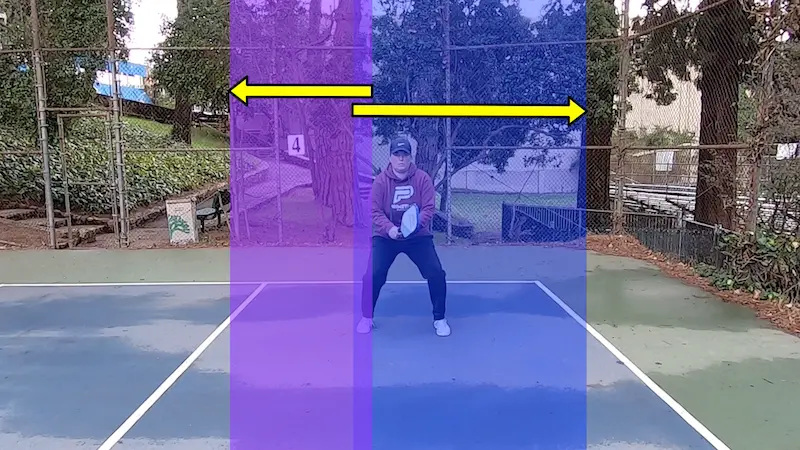
You want to set your paddle depending on how aggressively you expect the next incoming shot to be.
If you expect it to be quite aggressive then get lower and get your paddle lower. If they hit it hard it’s going to come relatively low on your body because of how far back you are in the court.
If it comes through high then it’s probably going out.
It’s best for your default here to be a lower paddle position rather than higher. If your reset drop was quite good then it won’t be as much of a concern.
But again, default low rather than high because it’s more likely your contact will be low because of your position in the court.
As you see the shot coming in you want to give your mind intentional and clear instructions. To do that you want to quickly visualize the entire shot you’re about to hit.
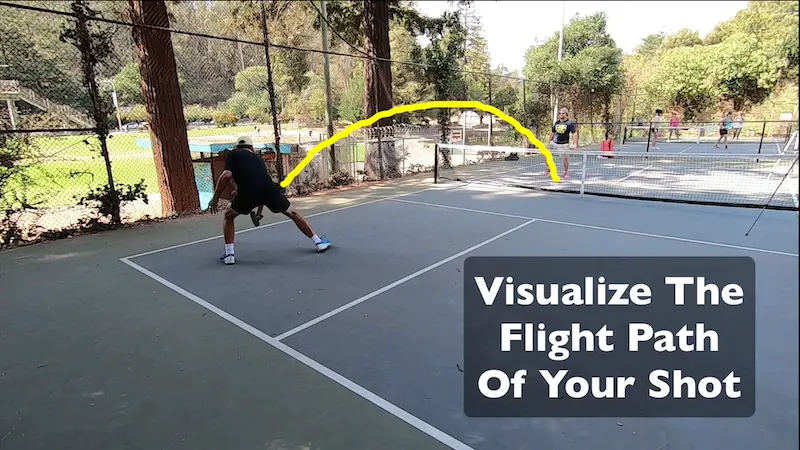
The whole trajectory of it from your paddle to the bounce on the other side. See the flight path and hit it through that flight path. Giving your mind that clear visual is key.
Your mind delivers instructions to your body so you must be clear about your commands as to what you want your body to do. If your instructions are unclear and fuzzy then your shot will be iffy, at best.
Your eyes see the ball as it comes in and your mind’s eye sees what you’re about to do with it. I know this may seem like a lot but this can ,and will, all happen very quickly as it’s in mental pictures and not in words.
Soon it’s actually quite easy and will become second nature It will help you out a lot.
If you don’t know what you should be thinking about and focusing on then now you do. See the flight path of your shot and hit it through the flight path you’ve imagined.
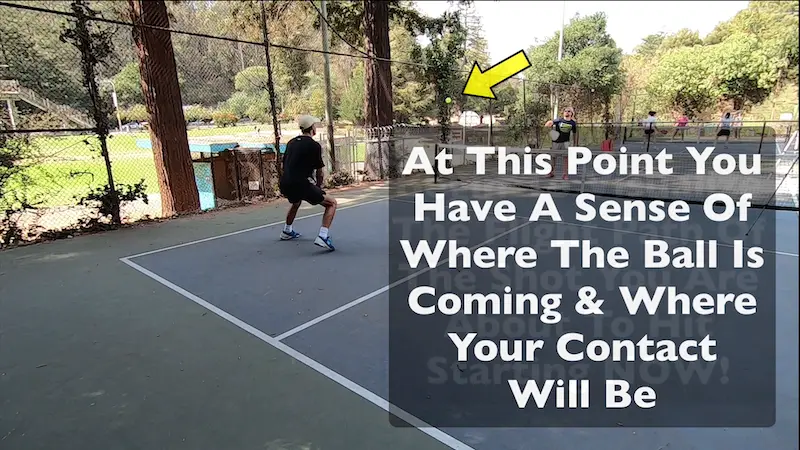
Easy right? Now you’re going to nail your shot every time? Well as we all know that’s easier said than done. We have to train this thinking and this shot to really master it.
As we very often say here at Primetime, one of our favorite ways to drill is through the use of games. We can strain the game in such a way so as to get a lot of reps on the skill that we’re working on.
A great one for this is one that we call three digs.
In this drill one player will start in the transition zone and one player will start up at the non-volley zone line and will use half of the court in a skinny singles format. You can do this down the line on either side or cross-court on either side. And in fact, you should do it in all the possible variations.
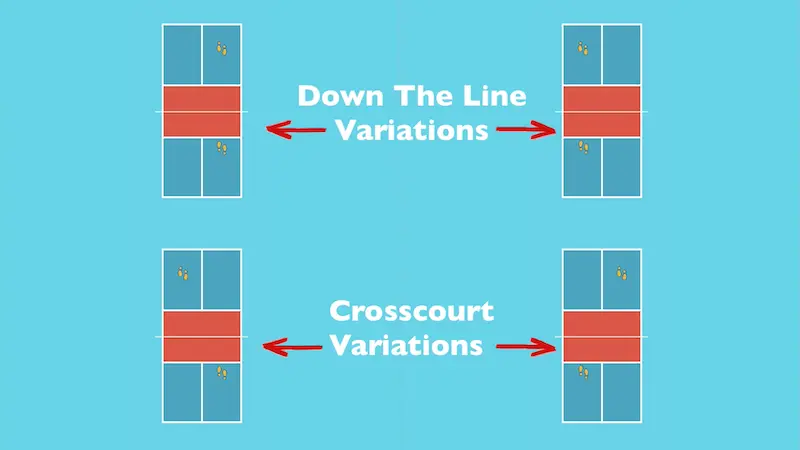
You can also do this with four players as a doubles point if you wish.
The overall gist of this game, and i’ll explain it in more detail shortly, is that the transition zone player has to dig out three reset shots from where they started in the transition zone.
Once they’ve done that they can advance to the non-volley zone line and finish the point from there.
After the transition zone player has dug out three shots anything goes. Any player can score a point at any time no matter what stage of the point you’re in regardless of if the three digs have been hit yet or not.
The game is scored in a 7-11 format.
The player starting in the transition zone has to score 7 points before the player starting at the non-volley zone line scores 11 points to win the game and vice versa.
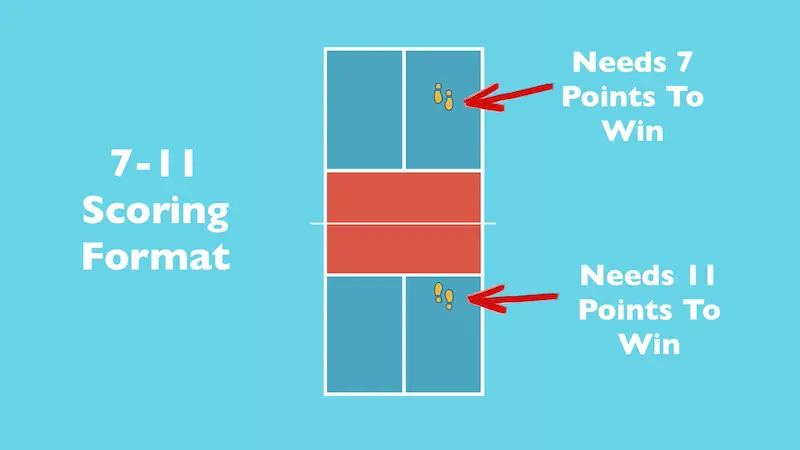
The transition zone player needs to score less points to win the game because they are starting at a disadvantage every point.
To start each point the transition zone player will feed the ball to the net player in such a way that they can take it out of the air as a volley.
The player up at the non-volley’s zone line must hit their first three shots in such a way that they bounce deep in the court near the transition zone player or beyond them. No short shots for them on any of the first three shots.
After the first three, anything goes for both players.
You should play several games of this and alternate roles so that each player is a chance to play in each position.
You can dial this game down or ramp it up based on the levels of the players.
If the player currently serving as the transition zone player isn’t yet very skilled with this shot, the non-volley zone line player can be more gentle with the first three shots by hitting them a bit slower and closer to the transition zone player. As they improve they can ramp up the difficulty of these first three shots.
If the transition zone player is very skilled at transition zone reset shots then you can really take it to them and press them hard by moving them aggressively or jamming them up at their feet with your very best shots. You want to make it so that they have to push themselves. The pressure you are applying should come up against the limit of their skills.
But, you still want to play it in such a way that it’s a feasible shot for them and they’re able to complete three in a row at times.
Get out there and work those transition zone resets. As mentioned previously, it’s an absolutely essential skill for long-term pickleball success and if you want to advance to high levels. It will have a positive ripple effect throughout your entire game.